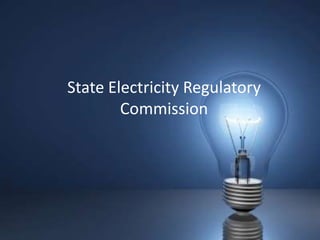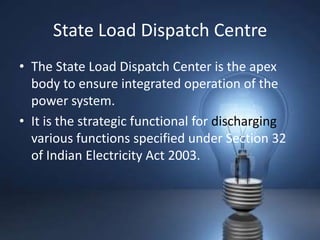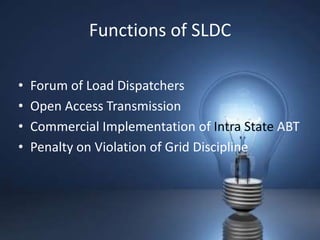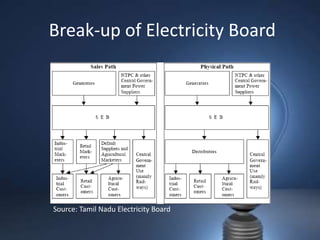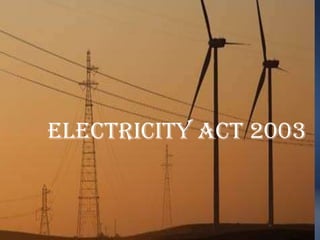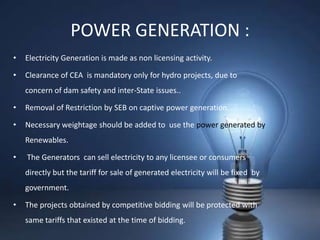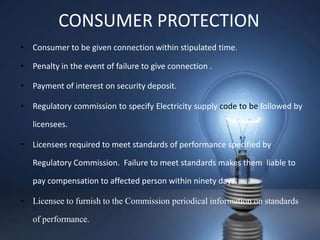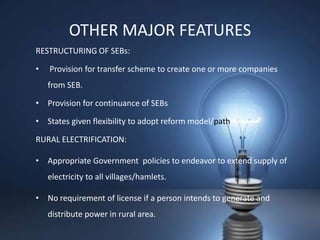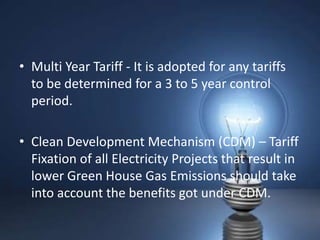The document summarizes electricity regulations in India. It discusses the Central Electricity Regulatory Commission (CERC) and State Electricity Regulatory Commissions (SERCs), which regulate the electricity sector. It also outlines key aspects of the Electricity Act 2003, including provisions related to power generation, transmission, and distribution. The act aims to increase competition and private sector participation in the electricity industry.
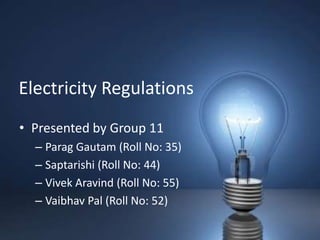

![What do you mean by Regulation??
Oxford Dictionary
Pronunciation:/rɛgjʊˈleʃ(ə)n/
ɪ
Noun
• a rule or directive made and maintained by an authority.
[mass noun]
• the action or process of regulating or being regulated](https://image.slidesharecdn.com/eso-120224124101-phpapp02/85/Electricity-policies-3-320.jpg)








